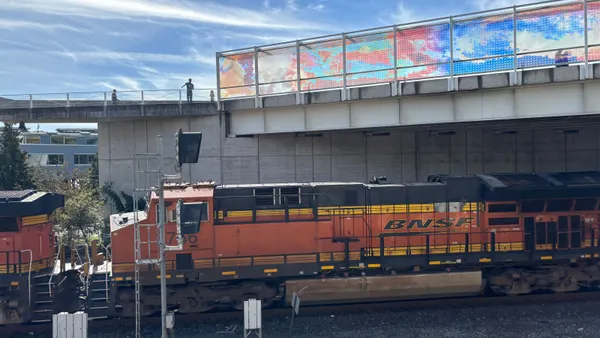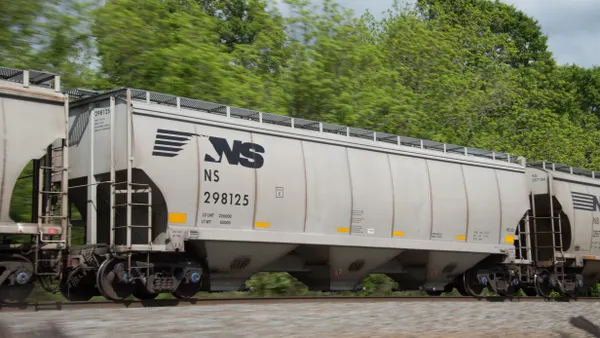Dive Brief:
- The Surface Transportation Board and the Federal Railroad Administration issued joint letters to the seven Class I railroads on Monday, expressing concern over missed industrial switches and "excessively late or annulled" trains in recent months due to insufficient crew sizes.
- "It is our expectation that there will be heightened emphasis on improving employee availability, equipment resources, and robust communication to quickly resolve service issues as they arise and to prevent them from becoming widespread," according to the letter.
- While the STB and FRA commended the railroads for delivering essential goods during the early months of the pandemic, they expressed concern about their ability to handle expected increases in intermodal volume during the upcoming harvest season. "Given the challenges related to changing demand patterns and operating conditions, increased communication and transparency with rail shippers is especially important," the letter said.
Dive Insight:
Rail volumes have worked toward recovery in recent months, but traffic remains low on a year over year basis, and railroads have kept crews small and renewed their commitment to precision scheduled railroading principles to keep costs down.
"We are continuing to optimize our train network and rationalize our yard network," Norfolk Southern COO Mike Wheeler said on an earnings call in July. The railroad has been "aggressively" reducing resources to meet its productivity goals.
Kansas City Southern, which has also been "right-sizing" its network during the pandemic, is planning for these changes to "stick" moving forward, COO Jeffrey Songer said in June.
The efficiency railroads tout as a benefit of PSR principles has often driven discord between the railroads and their customers. Last summer, shippers said service was at an all-time low, citing tactics such as reduced headcount, fewer operational yards and insufficient locomotives.
"Railroad employee availability, together with sufficient equipment resourcing, is essential for safe, fluid rail service in support of the nation’s economic recovery," the STB and FRA letter reads.
The letter comes about one month after Union Pacific's most recent earnings call, in which an analyst asked executives about locomotive and car availability. "We do not have an equipment shortage. We have cars parked in places," CEO Lance Fritz said in response to the question. And regarding workforce, "when we call people back, the people are returning," he said, adding that "we still have a lot of people furloughed."
Union Pacific reported having a 22% smaller workforce as of June 30, compared to the same time last year, crediting its improved dwell metrics and trip plan compliance in part to running longer trains and therefore requiring fewer starts.
The regulators have not made plans for consequences, legal action or next steps following the letters sent to the Class I railroads. Rather, the purpose of the letters was to make the railroads aware of potential issues.
Canadian Pacific responded to the STB and FRA letter noting that frequent adjustments to "crew availability in step with customer demand is normal" and an ongoing part of its business operations. It also noted that as it continues to "right-size" its assets, on-time performance in the third quarter was 96% compared to 92% over the same period last year.
The railroad assured regulators that it had sufficient locomotives to meet recovering demand, but it is still in the process of calling back furloughed employees. Of the 375 workers on furlough in Q3, 80 have been called back to work and "nearly all of whom have accepted and returned to the railroad on a timely basis" after the railroad negotiated with the unions to adjust their benefits in return for coming back to work earlier than the previously agreed upon 15 day call back window.














